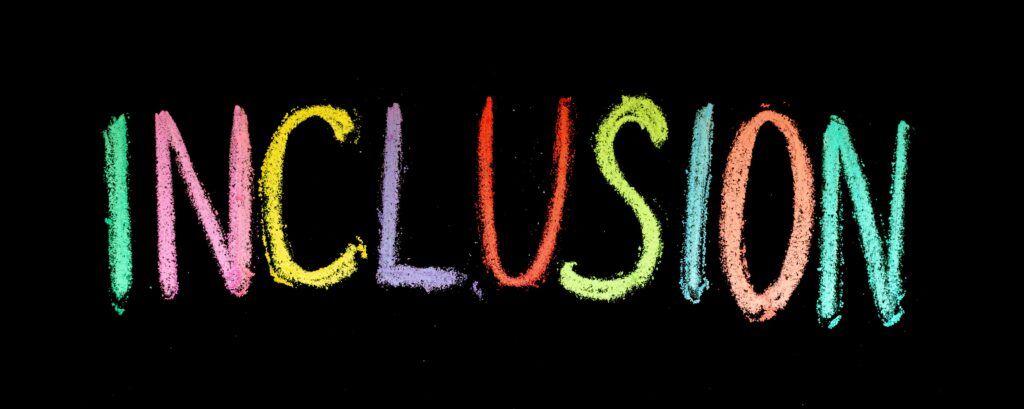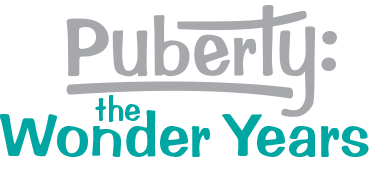The purpose of education is to give all students optimal conditions for learning. This involves making accommodations for students who need specific supports and modifying instruction based on the way individual students learn best. It also means creating an educational climate where all students feel safe and supported. Using inclusive language is one key to creating that safe and supportive school climate.
When students feel unsafe or disconnected from others in their school, their energy is drawn away from learning and instead focuses on survival. Recall Maslow’s hierarchy of human needs.[1] Physiological needs, safety, and belonging needs must be met before higher order learning can occur. Some groups of
students have not had their needs for safety and support met in their school environment. This has resulted in lower academic achievement, higher dropout rates, and more health risk behaviors, such as depression, suicide, substance abuse, and violence.
One group of students that continues to experience a lack of safety and belonging in schools is those who identify as transgender, gender fluid, nonbinary, and gender queer. In addition to being misunderstood and ridiculed, they feel invisible during sex education classes. Lessons are usually delivered in a way that addresses boys or girls, and excludes the many students who don’t relate to those labels.

Reasons to Use Inclusive Sex Education Language
Here are four reasons to use inclusive sex education language, what happens if we aren’t inclusive, and examples of how to be more inclusive.
Concrete Thinking
Young people who are entering puberty are concrete thinkers.[2] This is a developmental stage that all people experience. Learning becomes real when it engages the five senses. During this stage, students take things literally. This means that they cannot understand, interpret, and apply euphemisms; they need specific and descriptive information. During middle school, students begin to develop the ability to think abstractly over years. However, some students will continue to rely on concrete thinking, for example students with autism spectrum disorders.[3]
If we use euphemisms and abstract terms, we are not reaching students who are concrete thinkers. Adults may use euphemisms to avoid speaking bluntly, avoid controversy, out of personal discomfort, or other reasons.
Saying “people with a penis or people with a vulva” is clearer and more concrete than saying “males or females.” Saying “penis-in-vulva sex or penis-in-anus sex” is much more inclusive of sexual orientation and gender identity while also being more descriptive and concrete than saying sexual intercourse, vaginal intercourse, or anal intercourse.
Anatomical Variety
Sex assigned at birth is only based on one of five factors that determine biological sex: external genitalia. The other four factors—chromosomes, gonads, hormones, internal reproductive anatomy—are not obvious at birth and may not express themselves until puberty, if ever. Typically, the appearance of external genitalia results in babies being pronounced either male or female, a binary. However, about one of every 1,000 babies is born with intersex genitalia.[4] In addition, as many as 2 percent of babies born have other unseen intersex conditions.[5] That means intersex people have a sex characteristic that falls outside society’s binary view of being male or female.
If our health classes and sex education programs teach about reproductive anatomy, physiology, and puberty as a binary, male or female, we are leaving out students whose bodies and experience of puberty do not match either binary designation.
Using anatomical terms to describe body parts, health habits, and sexual behaviors allows all students to understand what applies to them. Saying “people with a vulva use an internal condom, and people with a penis use an external condom” is clearer than saying “girls use a female condom and boys use a male condom.”
Gender Identity Variety
Typically, people are taught that newborn babies are a boy (male) or a girl (female). This conflates biological features with gender. Gender identity is a person’s internal sense of being a boy or girl, both or neither. Sex assigned at birth is based on external biological features. Children form their gender identity by age three.[6] As soon as children can use language, they say “I’m a boy” or “I’m a girl.” For many children, their gender identity matches their sex assigned at birth; this is cisgender. For many other children, their sense of being a boy or a girl does not match the sex they were assigned at birth based on their external genitalia; this is transgender or gender queer. Adults tend to misunderstand children whose stated gender identity doesn’t match their genitals; they often think it’s just a phase. Students who are transgender or gender queer need their adults to believe them and listen to them.[7]
If we use gendered terms (he, she, boy, girl) to describe anatomy and physiology, we are leaving out students whose anatomy (sex assigned at birth) doesn’t match their gender. We are also reinforcing a false binary for both gender and biological sex.
Saying “people with a vulva need to wipe from front to back after using the toilet” is clearer than saying “girls need to wipe from front to back” since not all girls have a vulva and not all boys have a penis. Using the pronouns “they/them/their” instead of “he/him/his or she/her/hers” is more inclusive of all students and avoids reinforcing the binary view of gender.
Relationship Variety
Children who are entering puberty will experience a surge in sex hormones that causes many changes. One of those changes is having new feelings of attraction. These new feelings can be wonderful and confusing, especially for students who find themselves attracted in ways that don’t fit the heteronormative mold. While most students in grades 4 to 6 have not chosen to have sexual relationships yet, they can become aware of their sexual orientation as they move through puberty.[8] In addition, students have been observing older friends, siblings, and family members in a variety of relationships.[9]
If we assume that all students are straight, we are leaving out many students. If we talk about girls having boyfriends and boys having girlfriends, we are reinforcing heteronormative expectations. If we teach in heteronormative ways, we are making large groups of people invisible and reinforcing the stigma that continues to plague people in relationships that vary from society’s expectations.
Including examples of a variety of families and romantic relationships is more inclusive than only referring to straight couples. Saying things like “a person who is attracted to someone of the same sex,” “a person who is attracted to someone of another sex,” “a person who is not sexually attracted to others,” and other descriptors related to attraction acknowledges a range of emotional and sexual attractions that people might experience.
Resources for Inclusive Sex Education Language
- Gender Inclusive Language in the Sexual Health Education Classroom, Cardea, 2022
- Read this article for an example of inclusive language.
- Promoting Healthy Development of Sexuality and Gender Identity, Bright Futures, American Academy of Pediatrics
- Inclusive Language Guide article
- Defining LGBTQ+ Words for Elementary Students article
- What Do You Say to “That’s So Gay” article
Sources
- [1] Maslow’s Hierarchy of Needs
- [2] Cognitive Development in the Teen Years
- [3] Concrete Thinking
- [4] How common is intersex?
- [5] How sexually dimorphic are we? Review and synthesis. Am. J. Hum. Biol., 12: 151-166.
- [6] Children and gender identity: Supporting your child
- [7] What Age Do Trans Kids Know They’re Transgender?
- [8] Sexual Orientation
- [9] Tips for talking to your kids about sexual orientation
updated 2023-10-21



